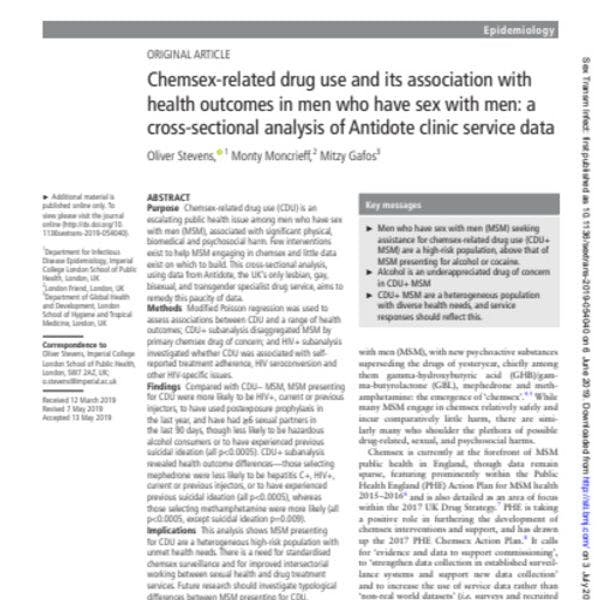Chemsex-related drug use and its association with health outcomes in men who have sex with men: A cross-sectional analysis of Antidote clinic service data
3 July 2019
By Oliver Stevens, Monty Moncrieff, Mitsy Gafos
Recreational and sexualised drug use in lesbian, gay, bisexual, and transgender (LGBT) populations is higher than that of the wider British heterosexual population. The past decade has seen the evolution of sexualised drug use in men who have sex with men (MSM), with new psychoactive substances superseding the drugs of yesteryear, chiefly among them gamma-hydroxybutyric acid (GHB)/gamma-butyrolactone (GBL), mephedrone and methamphetamine: the emergence of ‘chemsex’. While many MSM engage in chemsex relatively safely and incur comparatively little harm, there are similarly many who shoulder the plethora of possible drug-related, sexual, and psychosocial harms.
